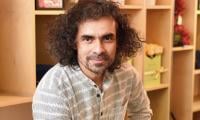The details were horrific. Outside the besieged city of Mosul, 13,000 wounded civilians are today waiting for reconstructive surgery – from just this one seven-month battle. Another 5,000 Iraqi police militiamen are waiting for the same surgery from recent military offensives, in their case to be cared for by the Iraqi ministry of interior.
But the health infrastructure that exists in the whole of Iraq cannot look after these wounded. As a result, some are turning up in Damascus – amid the frightfulness of the Syrian war – for the surgery they cannot obtain at home. A new graft in Damascus costs $200.
In the balmy early summer of Beirut this week came these detailed new horrors of Middle East war. For beside the state-of-the-art American University of Beirut Medical Center (AUBMC) in the city, doctors from across the region, from Iraq, Syria, Yemen and Palestine – along with the International Red Cross and Medecins Sans Frontieres – came to discuss their fears for the wounded and the sick and their conviction that drug-resistant bacteria are growing in hospitals in the Middle East. Just how to deal with this may be within the knowledge of the military medical authorities – but not within the hands of civilian doctors.
Did this start in Bosnia, as one doctor suspects, where civilian and military casualties merged into each other – it was, after all, a war where a civilian turned into a soldier and then re-emerged as a civilian the moment he entered a hospital? The first Global Conflict Medicine Congress, arranged by Glasgow-trained Professor Ghassan Abu-Sittah, head of plastic and reconstructive surgery at AUBMC, raised these questions in stark and painful ways.
Drug resistance, he said, did not exist in the 1980-88 Iran-Iraq war – when 150 Iraqi soldiers were wounded each day during the Fao peninsula battles alone – so what happened during the post-1990 sanctions period? “Iraqis were allowed to use only three antibiotics for 12 years”, he says. “These were the only ones allowed in by the UN. Heavy metals had been used in the 1991 [liberation of Kuwait] war. You found celinium [present in the smashed concrete of destroyed houses], tungsten and mercury in the casing of penetrating bombs. What are the long-term effects of these metals on the human body?”
A Medecins Sans Frontieres analysis said that multidrug resistant [MDR] bacteria now accounts for most war wound infections across the Middle East, yet most medical facilities in the region do not even have the laboratory capacity to diagnose MDR, leading to significant delays and clinical mismanagement of festering wounds.
Beyond the physical damage caused by weaponry, Whittall added, “destroyed or degraded sanitation facilitates the microbiological seeding of wounds. The body, weakened by the wound, is reinjured when it interacts with the harsh, physically degraded environment.”
Iraqi-trained and Harvard-educated Dewachi, the American University of Beirut’s assistant professor of medical anthropology, spoke at length of Iraq’s cavalry of war victims and quotes an Iraqi patient waiting for treatment in Beirut. “Most of the good doctors have left the country”, the man told Dewachi, “and those who remain have lost their humanity”.
Dewachi’s forthcoming book, Ungovernable Life: Mandatory Medicine and Statecraft in Iraq, which traces Iraq’s medical history from the First World War to 2003, will reveal that successive post-2003 Iraqi governments have been sending civilians, military and security forces personnel, parliamentarians – and even militia and political party members – to hospitals in Beirut.
This article has been excerpted from: ‘After Middle Eastern Wars End, the Medical Wars Begin’.
Courtesy: Counterpunch.org
A health worker administers polio vaccine drops to a child during a door-to-door polio vaccination campaign in Lahore,...
Armed militants of the banned Tehreek-e-Taliban Pakistan pose for a photograph in Orakzai Agency. —...
An aeroplane of the national flag carrier of Pakistan is seen in this file photo. — AFPWhile Pakistan considers...
Representational image of a graph depicting various variables. — APP/FileInitiated by the centre and fiercely...
In this picture taken on April 16, 2023, people throng a market area during shopping in Lahore. — AFPOne of the...
Honour crimes also target men. In Sikandar Ali Lashari vs The State, SHC upheld conviction passed by ATC for honour...







